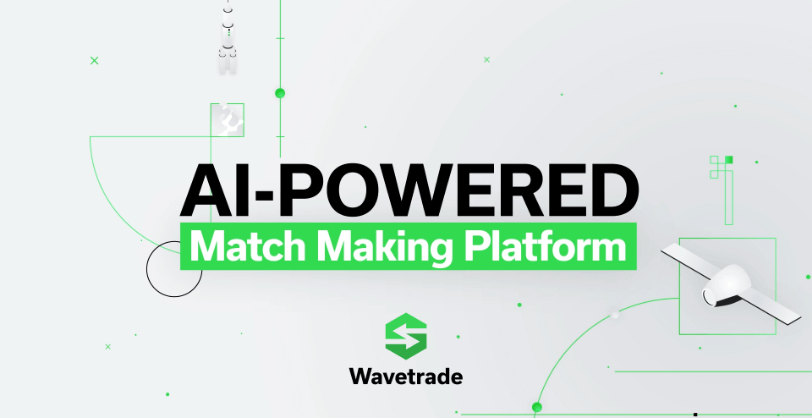28. APRIL 2023 Software Company One Data Celebrates Its 10th Anniversary
Creating Value and Sustainability through AI: Software Company One Data Celebrates Its 10th Anniversary
Passau, April 28, 2023 – It all started in 2013 with an initial team of three people and a strong vision to comprehensively link data. Back then, the startup was operating out of Passau under the name of ONE LOGIC. At the start of this year, the software company changed its name to One Data and now employs 300 members of staff from 30 countries. More than 70 customers use the software developed by the company’s data science and AI specialists to create genuine added value from massive amounts of data via artificial intelligence (AI). SCHOTT AG, thyssenkrupp Steel Europa AG and Markant AG, Europe’s largest trade cooperation, all benefit from One Data’s solutions.
The company has gone from strength to strength in the past few years in particular, not least thanks to its One Data Cartography software suite. In fact, the workforce has doubled since 2020, with experts from more than 30 countries working across One Data’s four sites in Passau, Munich, Frankfurt and Berlin – and the company looks set to grow well into the future. This is due in no small part to the fact that One Data Cartography has arrived at the perfect time, with the world changing in terms of how data is processed and used. Data mesh – the technical term for this socio-technical approach – is bringing data sovereignty back into the hands of the experts who can do something with it in their departments. “‘Decentralization’ and ‘data products’ are the key words here, as they promise nothing less than total sustainable value creation from all corporate data,” explains Dr Andreas Böhm, founder and Managing Director of One Data GmbH.
Data Preparation Requires 80% Less Time
All companies want to create more valuable data while being more productive and sustainable. What they need for this is a software suite that allows them to understand, link and use all their data – regardless of the silos in which they are currently trapped – in a qualitative way. That was my vision and this is what our highly automated software – which draws on the power of AI – does,” states Böhm about the product and the success story of One Data. Many concepts that are designed to manage data are simply too inflexible, meaning data is left without purpose in data lakes or data warehouses.

The past few years have seen the rise of data mesh, a new trend that puts a decentralized approach to data first: “Under this approach, the company’s various divisions manage their own data – after all, they know it best – while making a high-quality version available to the company as a whole in order to generate value. This is what is known as a ‘data product’. With our software being able to quickly create quality versions of this product within a collaborative process, we have found that companies spend 80% less time on this task. Instead of starting from scratch every time a team needs data, they can see what is already available and then request access to the data products they require. As a result, data-based business solutions can be developed twice as fast,” states Böhm.
In the past few years, the situation in terms of complex landscapes within companies, organizations and supply chains has changed substantially, not least due to comprehensive digitalization – which includes overarching, data-driven data management and a 360-degree overview of data. “In short, data needs to be linked and analyzed in order to generate fresh value for a company. There are many new challenges on the horizon: climate change, scarce resources and changing global transport and goods flows. We need to find intelligent ways to overcome these challenges. The answer is right in front of us: data. By linking data, we can create tangible economic benefits, not least more resilient supply chains, more productive manufacturing processes and more precise forecasts. At the same time, we can cut down on resource usage,” explains Böhm.
An Interactive Map Creates an Overview of the Data Landscape
An automatically generated, interactive visualization of a data map is the key to achieving this. On the map, every data set is represented by a hexagon, creating a honeycomb-like overview of the data landscape. The data can be viewed in various ways (raw data for analysts, business view for departments, etc.) and users can quickly and easily gain a complete impression of the situation while also being able to automatically improve the data quality and identify patterns.
The data can also be linked together and used as a data product throughout the company as part of any manner of business applications. “The demand is high. This is due in part to the fact that many companies previously put their faith in AI and other related technologies, but which failed to take off due to insufficient data integration. We are now providing companies with a tool that turns the dream of AI-driven innovation and value creation into reality,” states Böhm with regard to the software’s capability.
It’s the Practical Application That Counts: SCHOTT Achieves Innovation Goals Quickly Thanks to Data Mesh
Concepts such as “data mesh”, “decentralization” and “data product” may sound highly abstract, but the potential is clear when a software suite such as One Data Cartography puts them into practice. The latest proof: SCHOTT, a leading producer of high-tech raw materials for specialty glass. The company decided against a centralized data architecture so that it could free data from silos, give data teams more breathing space, and enable department-specific knowledge to be obtained from data once more. The company used One Data Cartography to create a “marketplace for data products”, with all relevant departments able to access this hub – meaning they do not have to start from scratch each time.
The software uses highly automated data preparation processes to cut down on the manual work involved in data integration. At the same time, the suite ensures that the data can be used anyway – known as “interoperability”. As an example, SCHOTT can use historical data in conjunction with AI and machine learning to automatically calculate the best settings for its glass milling machines. This saves both time and costs and establishes a process that can be continually improved based on the data that is available.
Virtually all companies today have a central department that is responsible for data administration. Its central teams are inundated with requests, yet tend not to have the knowledge they require about the various domains to actually gain value from data and leverage its potential. Our goal is to turn that concept on its head and “democratize” the use of data,” explains Martin Kemmer, Head of Smart Factory & OT4.0 at SCHOTT. He goes on to explain that “thanks to One Data, we can link various data sources, visualize our entire data landscape in the form of a map, and quickly create high-quality data products that can be forwarded to the individual departments and be made easily accessible. This enables them to be used in the decision-making process.”
As data landscapes become ever more complex, it will not be possible to manage them via a centralized system. Instead, the corporate data landscape of the future has to be based on linking data instead of centralization. “One Data enables companies to take advantage of data mesh – which itself is built on a foundation of linking data – and pave the way for a new, more efficient, more sustainable approach to extracting value from data,” states Böhm in closing.




